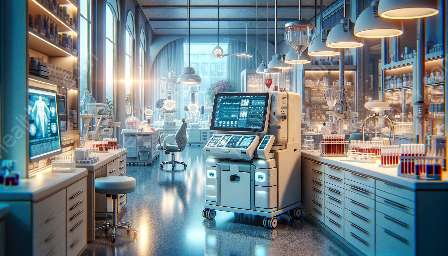Microscopes play a crucial role in clinical testing equipment and are essential tools in the field of medical devices and equipment. This comprehensive topic cluster will delve into the diverse types of microscopes, their importance in clinical testing, and their wide-ranging applications in the medical field.
The Importance of Microscopes in Clinical Testing Equipment
Microscopes are indispensable tools in clinical laboratories, enabling the examination of cells, tissues, and biological specimens at high magnification. They are used to identify pathogens, study cellular structures, and aid in the diagnosis of various diseases and medical conditions.
Types of Microscopes
There are several types of microscopes, each designed for specific applications. These include optical microscopes, electron microscopes, fluorescence microscopes, and confocal microscopes, among others. Each type offers unique capabilities for examining samples at different magnifications and resolutions.
Optical Microscopes
Optical microscopes, also known as light microscopes, use visible light and lenses to magnify samples. They are commonly used in clinical laboratories for routine examination of biological samples such as blood smears, urine, and tissue biopsies.
Electron Microscopes
Electron microscopes utilize a beam of electrons to create high-resolution images of specimens. These microscopes are essential for examining ultrastructural details of cells and tissues, allowing for in-depth analysis at the nanoscale level.
Fluorescence Microscopes
Fluorescence microscopes are equipped with specific light sources to excite fluorescent dyes in samples, enabling the visualization of specific structures or biomolecules within cells. These microscopes are vital for studying the localization and behavior of specific proteins and molecules within biological samples.
Applications of Microscopes in Medical Devices and Equipment
Beyond clinical testing, microscopes have diverse applications in the development and quality control of medical devices and equipment. They are used to inspect the quality of materials, examine the precision of components, and ensure the functionality of intricate medical instruments.
Conclusion
The world of microscopes is a fascinating one, with diverse types and applications that are vital in clinical testing equipment and the development of medical devices and equipment. Understanding the significance of microscopes in the medical field is crucial for advancing research, diagnosis, and innovation across various healthcare domains.


